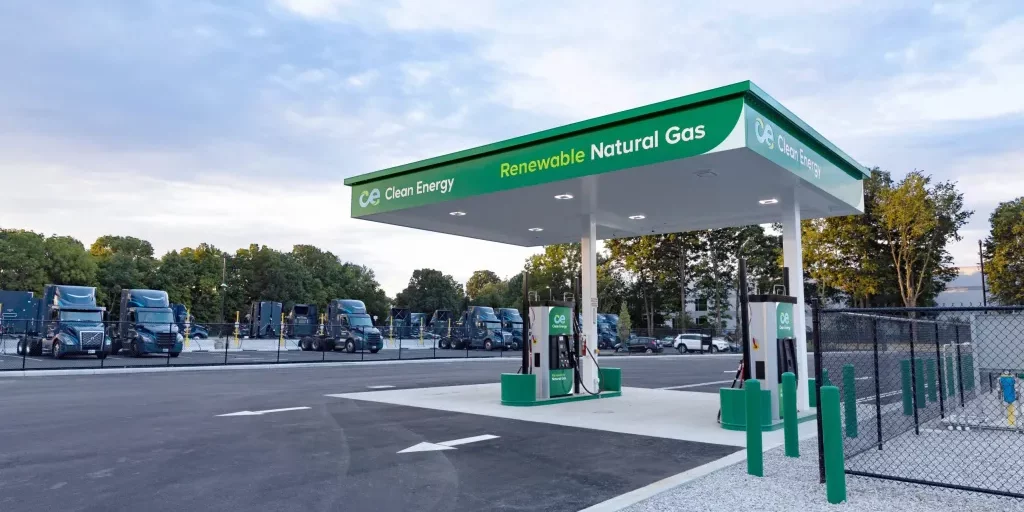Clean Energy Fuels Corp. celebrated a ribbon cutting ceremony with state and local officials, agriculture leaders, and company executives at its new biomethane station in Groveport, OH. Amazon trucks will fuel at the site, which also will provide public access for local fleets. This is the first of 19 filling stations part of an agreement between Clean Energy and Amazon; the remaining facilities should be operational by the end of the year, supplementing Clean Energy’s fueling network of 550 stations in North America.
“Large fleets fueling with renewable natural gas have the ability to realize immediate and significant carbon reduction, especially in the heavy-duty truck sector which could be many years away from meaningful electrification,” said Andrew J. Littlefair, president and CEO, Clean Energy. “The opening of our station in Ohio is exciting because it’s the first of many more to come throughout the U.S. and will help efforts to reduce greenhouse gas emissions and reduce climate change.”
By dispensing 700,000 gallons of renewable natural gas annually instead of diesel, the Groveport station will reduce carbon emissions by 6,848 metric tons—the equivalent of growing 114,133 trees for ten years, removing 1,489 passenger cars from the road, or reducing 2,750 tons of landfill waste.
Also joining the ceremony was Evan Barton, owner of South Fork Dairy in Newark, OH. Clean Energy recently signed an agreement to develop a digester that should produce 500,000 gallons of biomethane a year from the manure produced by Barton’s 3,300 dairy cows when completed. This $15 million investment at the South Fork Dairy will produce bio-CNG to be used at the Groveport station and others around the country. Similar investments in other Ohio dairy farms are underway, providing farmers to address the issue of fugitive methane emissions while benefiting from an additional revenue stream.
The Groveport station covers 6.7 acres and includes multiple fast-fill dispensers for easy in-and-out fueling of biomethane; time-fill posts for up to 52 trucks, allowing for cost-effective fueling and the most advanced technology transmitting real-time data to customers; and 52 parking places for drivers’ personal vehicles. This multi-million-dollar investment in the Columbus, OH area will put it on the map as a hub for clean, sustainable fueling. Plans are already underway to add fueling capacity for additional heavy- and medium-duty trucks.
California Air Resources Board gives renewable natural gas from dairies an average carbon score of -343, much cleaner than electric powered vehicles.
Source: Clean Energy







